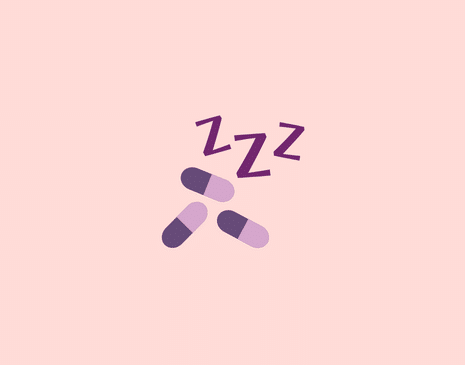Sex shouldn’t be painful. Inserting a tampon shouldn’t be painful. And despite being mildly uncomfortable, a pap smear shouldn’t be painful, either. Yet, for some women, vaginal penetration when having sex, using a tampon, or visiting the gyno is painful. We’re talking about the female sexual dysfunction, vaginismus.
As one of the most under-researched and misunderstood female sexual pain disorders, it’s difficult to pinpoint precisely how many women develop vaginismus in their lifetime. So, we’re breaking vaginismus out of stigma prison to let everyone living with the persistent stinging pain of vaginismus know that you are not alone.
Trigger warning: This article mentions sexual abuse and rape.
What is vaginismus?
Vaginismus is a women’s health condition that involves involuntary tightening and muscle spasms of the pelvic floor when penetration is attempted. Whether it’s a tampon, finger, penis, sex toy, or gynaecological exam tool, vaginismus causes the muscles surrounding the vagina to contract to the stage where the vagina cannot be penetrated.
For some women, vaginismus is a debilitating condition that causes many physical and mental health issues, including anxiety, fear, distress, and loss of sexual desire.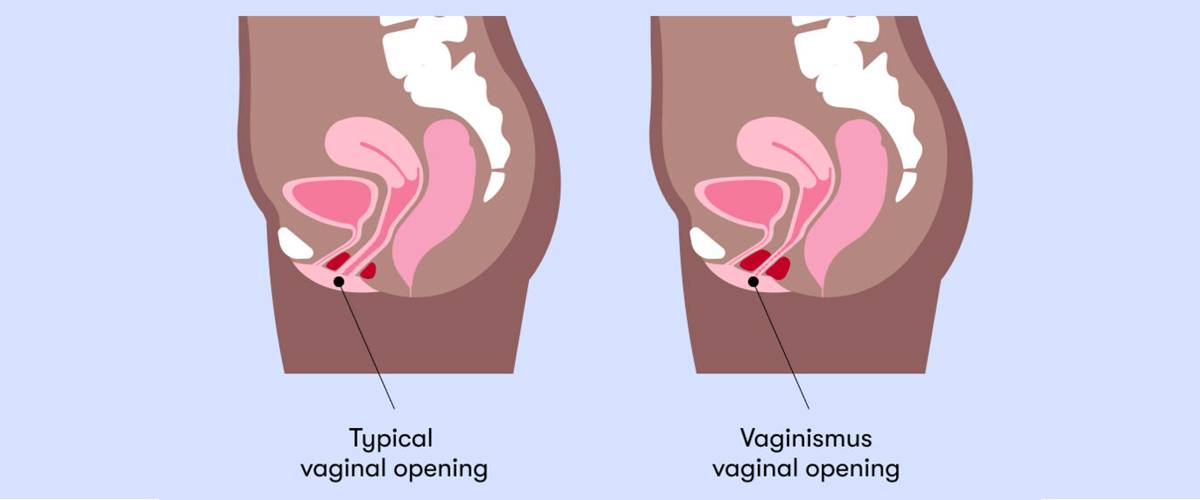
Types of vaginismus
Vaginismus can be categorised as primary and secondary.
Primary vaginismus
Primary vaginismus is when the condition has existed from a young age. Women with primary vaginismus usually realise they have the condition when they hit puberty and try tampons for the first time or when they have their first gynaecological exam.
Secondary vaginismus
Secondary vaginismus can appear at any stage of life and is usually triggered by a specific event or trauma, such as childbirth, relationship issues, acute infection, or sexual assault. Secondary vaginismus is often linked to trauma, and mental health conditions, such as anxiety, depression, and post-traumatic stress disorder (PTSD).
What are the symptoms of vaginismus?
The main vaginismus symptoms include pain and discomfort during any form of penetration, including painful intercourse, inserting a tampon, and having a vaginal examination. This pain may be accompanied by other symptoms, such as burning, itching, tightness in the vagina, and painful urination.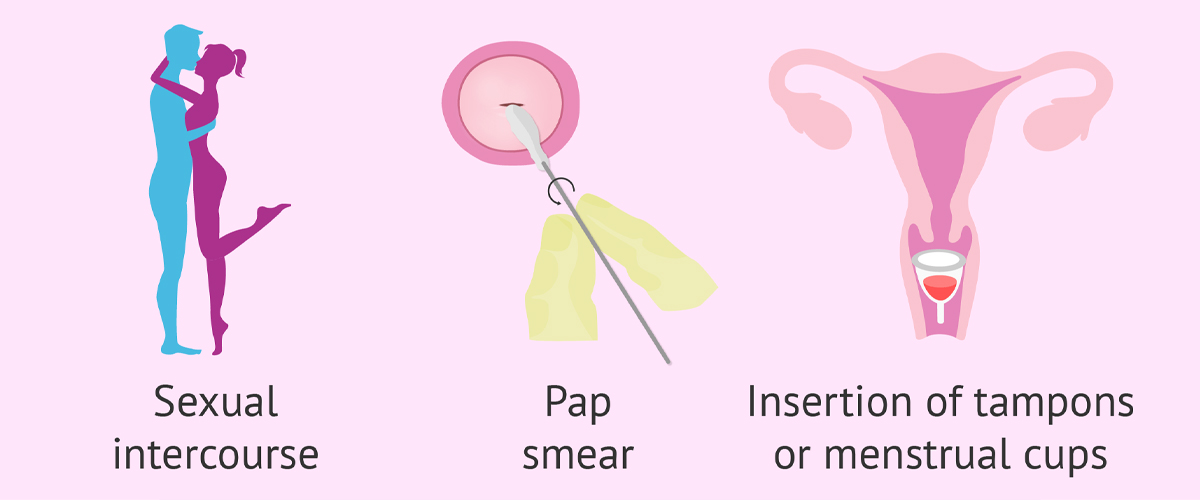
What causes vaginismus?
The exact cause of vaginismus is unknown; however, it is linked to a combination of physical and psychological factors. Physical causes may include vaginal infections, scarring from surgery, pelvic floor muscle weakness, or childbirth injuries, such as vaginal tears. Psychological causes may include anxiety, stress, or negative feelings about sex due to past sexual abuse, rape, or trauma.
Physical causes of vaginismus
Vaginal infections
Vaginismus is caused by a muscle spasm in the pelvic floor muscles surrounding the vagina. This muscle spasm can be triggered by various things, including infection. While any vaginal infection can cause discomfort, some infections are more likely to trigger vaginismus, such as bacterial vaginosis (BV), yeast infections, and trichomoniasis.
If you have vaginismus and think that an infection may be the cause, it is important to see a doctor so that you can get effective treatment. With proper treatment, most vaginal infections can be cleared up, and you can enjoy pain-free intercourse.
Surgical scarring
In some cases, vaginismus is caused by surgical scarring. This may occur when the muscles of the vagina are damaged during surgery, causing them to heal in a way that makes them tighter and less flexible. Scarring can make it difficult or impossible for the vagina to stretch enough to allow for penetration, leading to pain during intercourse.
Weak pelvic floor muscles
One common cause of vaginismus is weak pelvic floor muscles. The pelvic floor muscles support the pelvic organs and help to control urine flow. They can weaken as a result of pregnancy, childbirth, menopause, or other factors. When these muscles are weak, they may not be able to properly support the pelvic organs, which can lead to pain during sex. Additionally, the muscles may involuntarily spasm or tighten in response to any kind of vaginal penetration, making sex impossible or incredibly painful.
Weak pelvic floor muscles are a common cause of vaginismus; however, they can be treated with pelvic floor muscle exercises called Kegels. These exercises can help to strengthen the muscles and make sex more comfortable. If you’re struggling with vaginismus, talk to your doctor about pelvic floor muscle exercises or other treatment options.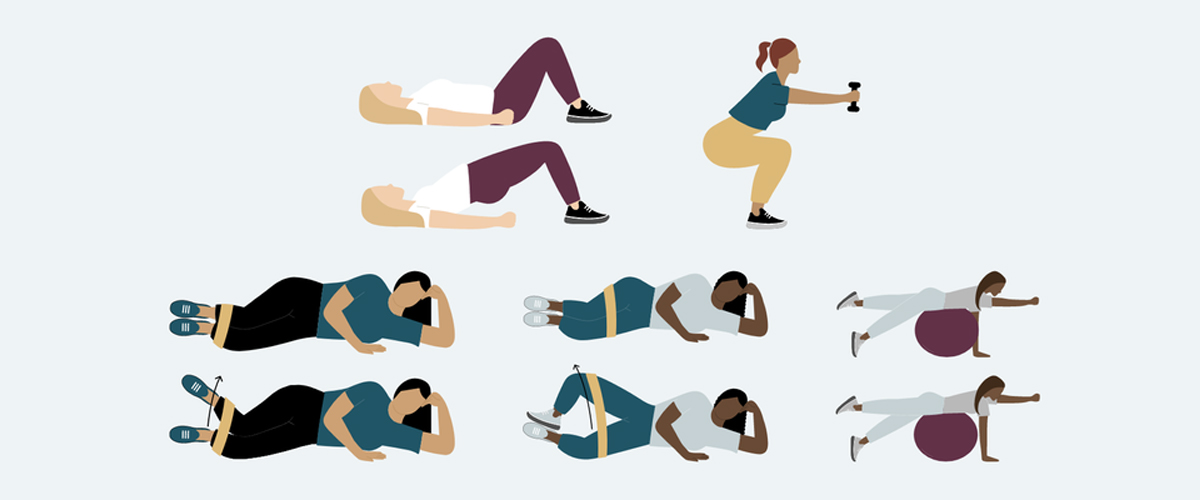
Psychological causes of vaginismus
Anxiety
Vaginismus is a condition in which the vaginal muscles tighten involuntarily, making sexual intercourse painful. For many women, the condition is linked to anxiety. The fear of pain or being ‘touched’ in the vaginal area can trigger a reflexive tightening of the muscles, which can then lead to vaginismus.
Sometimes, the anxiety may be caused by a traumatic experience, such as sexual assault. For others, it may be the result of more general anxiety about sex or their bodies. Whatever the cause, vaginismus can be a very distressing condition.
Stress
Stress can lead to vaginismus in a few different ways. Firstly, stress can cause the vaginal muscles to tighten involuntarily, as they do in other conditions like anxiety or depression. Stress can also interfere with sexual arousal, making it more difficult for the muscles to relax, and stress can lead to negative associations with sex, which can worsen vaginismus.
If you’re struggling with vaginismus, it’s important to talk to your doctor about ways to reduce stress and manage the condition.
Trauma
The cause of vaginismus is not always clear; however, it can be linked to trauma, either physical or emotional. Physical trauma to the vagina, such as that caused by childbirth or surgery, can trigger vaginismus. Emotional trauma, such as that caused by rape or sexual abuse, can also lead to vaginismus. In some cases, vaginismus may be caused by a combination of physical and emotional factors.
If you think you may have vaginismus, it is important to talk to a doctor or other medical professional to get a proper diagnosis and treatment.
Diagnosis of vaginismus
Vaginismus is diagnosed through a medical history and physical exam. Your doctor will ask a series of questions regarding your symptoms and medical and sexual history. They will also do a pelvic exam to check for muscle spasms in the pelvic floor muscles.
If your doctor suspects vaginismus, they may refer you to a specialist for further testing. This may include a pelvic exam with a speculum or a vaginal sonogram. These tests rule out other conditions that can cause similar symptoms.
Treatment for vaginismus
Treatment for vaginismus depends on the underlying cause and typically involves a combination of vaginal dilators, pelvic floor muscle exercises, relaxation techniques, and therapy.
Vaginal dilators
Vaginal dilators are one of the most common treatments for vaginismus. Dilators are small, cone-shaped devices that come in different sizes. The idea is to start with a small dilator and gradually work toward a larger size. This helps to stretch and desensitise the muscles of the vagina, making sex and other activities less painful.
Pelvic floor physical therapy
Pelvic floor physical therapy is a type of therapy that helps to strengthen the pelvic floor muscles. These muscles support the bladder, uterus, and rectum, and they are responsible for controlling urine flow. When these muscles are weak, they can cause several problems, including incontinence, pain during sex, and difficulty achieving orgasm.
With the help of a pelvic floor physiotherapist, kegel exercises can help improve the strength of these muscles, which can reduce or eliminate these problems. For women with vaginismus, pelvic floor physical therapy can also help relax the muscles causing the spasm, making sex less painful and more enjoyable.
Relaxation techniques
There are several different relaxation techniques that can help to ease the symptoms of vaginismus. One of the most effective is deep breathing exercises. This involves taking slow, deep breaths and focusing on the sensation of the breath entering and leaving the body. This can help to relax the muscles and ease the pain.
Other relaxation techniques that can be helpful include progressive muscle relaxation, visualisation, and self-massage. These techniques can help reduce the muscle tension and pain associated with vaginismus.
Sex therapy and counselling
Vaginismus affects a woman’s ability to experience vaginal penetration, whether that be sexual intercourse, insertion of a tampon, or a gynaecological exam. It is a condition that can cause pain during sex, which can lead to difficulties with intimacy and sexual relationships. For many women, the condition is accompanied by anxiety and fear.
Sex therapy and counselling can help address these issues and support women with vaginismus. Through therapy, women can learn to relax and feel comfortable with their bodies, which can help to reduce pain during sex. Counselling can also help to address any relationship problems or past trauma that may be causing or exacerbating the condition.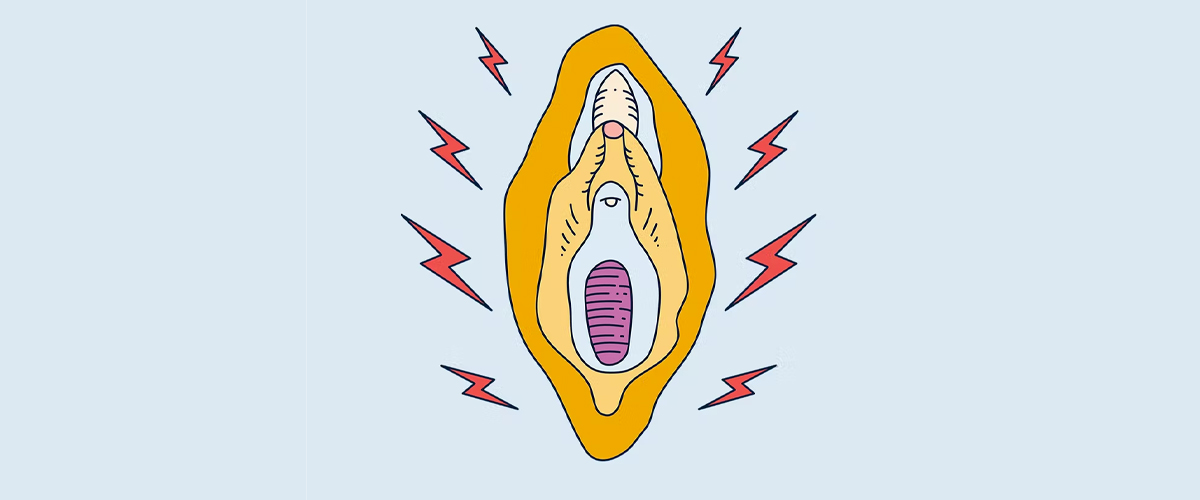
Living with vaginismus
Painful sex isn’t fun for anyone. However, living with vaginismus doesn’t mean saying goodbye to your sex life. Women who have the condition can still engage in sexual pleasure and orgasms until they’ve overcome vaginismus. Some examples of sexual activities that don’t involve penetration include oral sex, massage, masturbation, and using sex toys.
Get hassle-free healthcare from your couch!
Looking after your sexual health is easy with Youly. Organise women’s health treatments and medical prescriptions online for the successful management of the conditions you’re dealing with.


